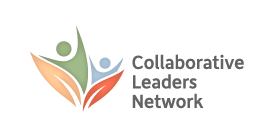The primary goal of this stage is to build “the table” and get the process organized.
This stage tests the waters for a viable collaboration project and, if it appears viable, initiates critical start-up steps that lay the foundation for a potentially successful effort. The specific goals and outcomes are to:
- Understand the timeliness of a possible collaborative effort and the readiness and willingness of different potential conveners, sponsors, and stakeholders to enter into a good-faith process.
- Develop a working “hypothesis” about the substantive, procedural, and relational challenges that may lie ahead in a possible project.
- Develop a preliminary and still-tentative “choreography” and process design for the project, to be ratified later by the stakeholders.
In some cases, this may involve a full-blown formal stakeholder assessment; in other cases, it may be far less formal. Some portion of this choice is driven by complexity: the more issues, stakeholders, and urgencies, the more appropriate a formal assessment and analysis. It may be fitting to ask a few influential people to serve as a provisional steering committee or to ask two people who are on different sides of an issue to act as interim “co-chairs” of an effort to get a dialogue underway.
Depending on the project, the specific outputs or deliverables of this stage may be any, some, or all of the following:
- A formal concept paper
- Formal or informal stakeholder interviews
- An informal report back to actual or potential conveners and sponsors
- Creation of a steering committee or co-chairs
- A formal or informal report back to everyone interviewed
- A preliminary design for a process if the project seems viable, along with potential goals and timelines
- Formal letters that “kick-start” a process
- A time and cost proposal
In situations where there is a high level of mistrust or rancorous relationships, it may be necessary to check in with people repeatedly, both to offer assurance that a good-faith effort at dialogue and negotiation is being made, and to create psychological momentum for the project.
Setting the stage involves positioning people to interact with each other in the most constructive ways possible.
